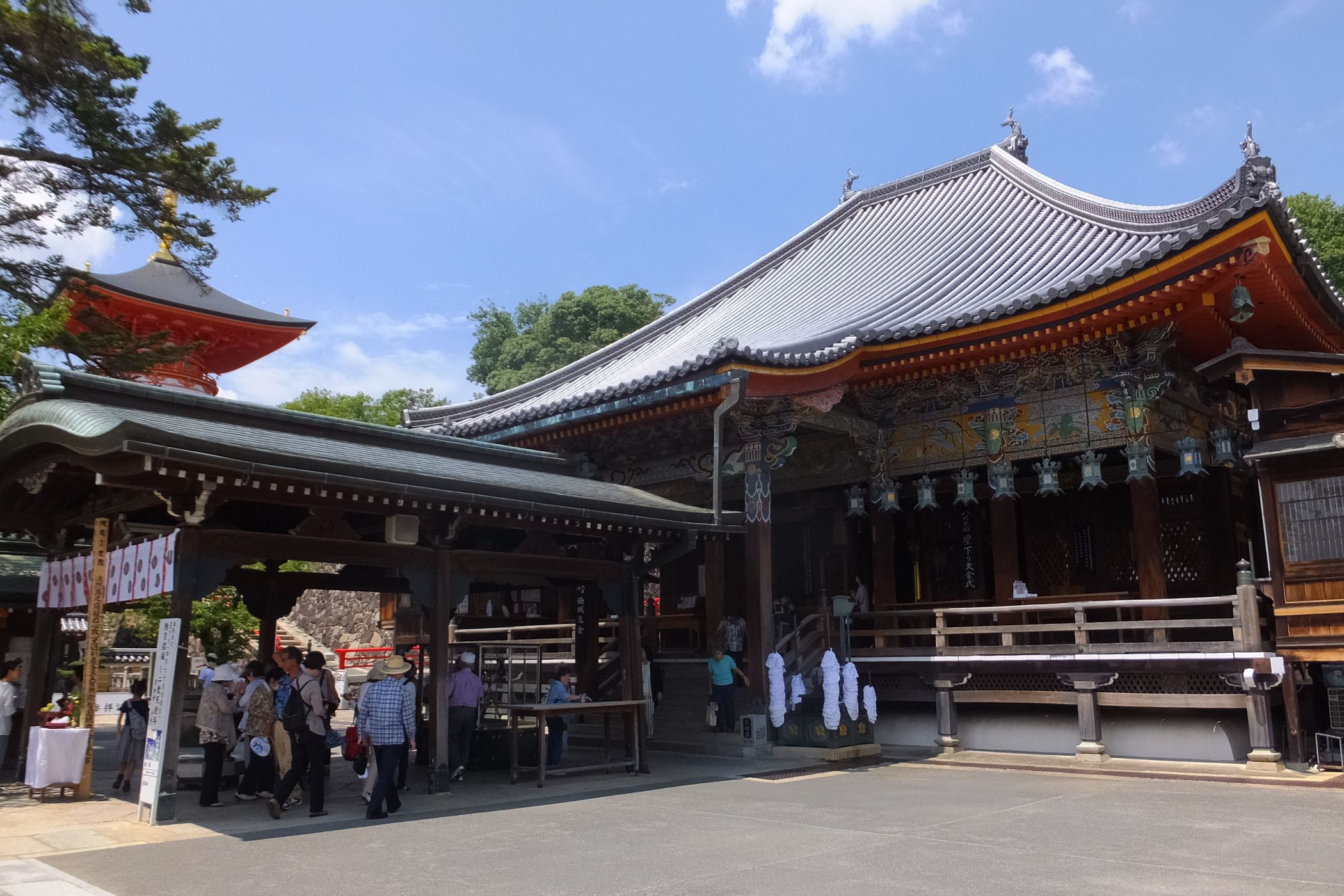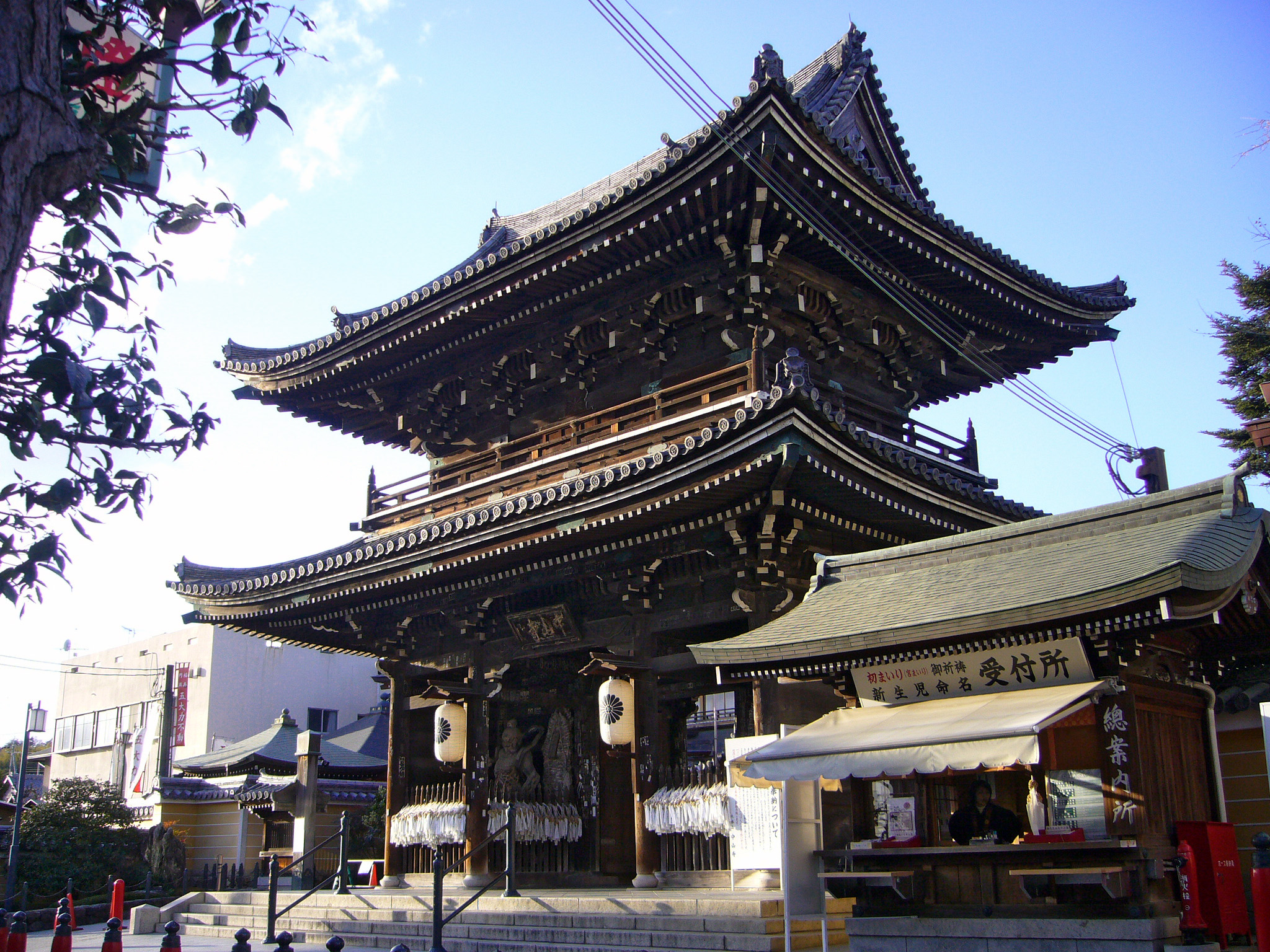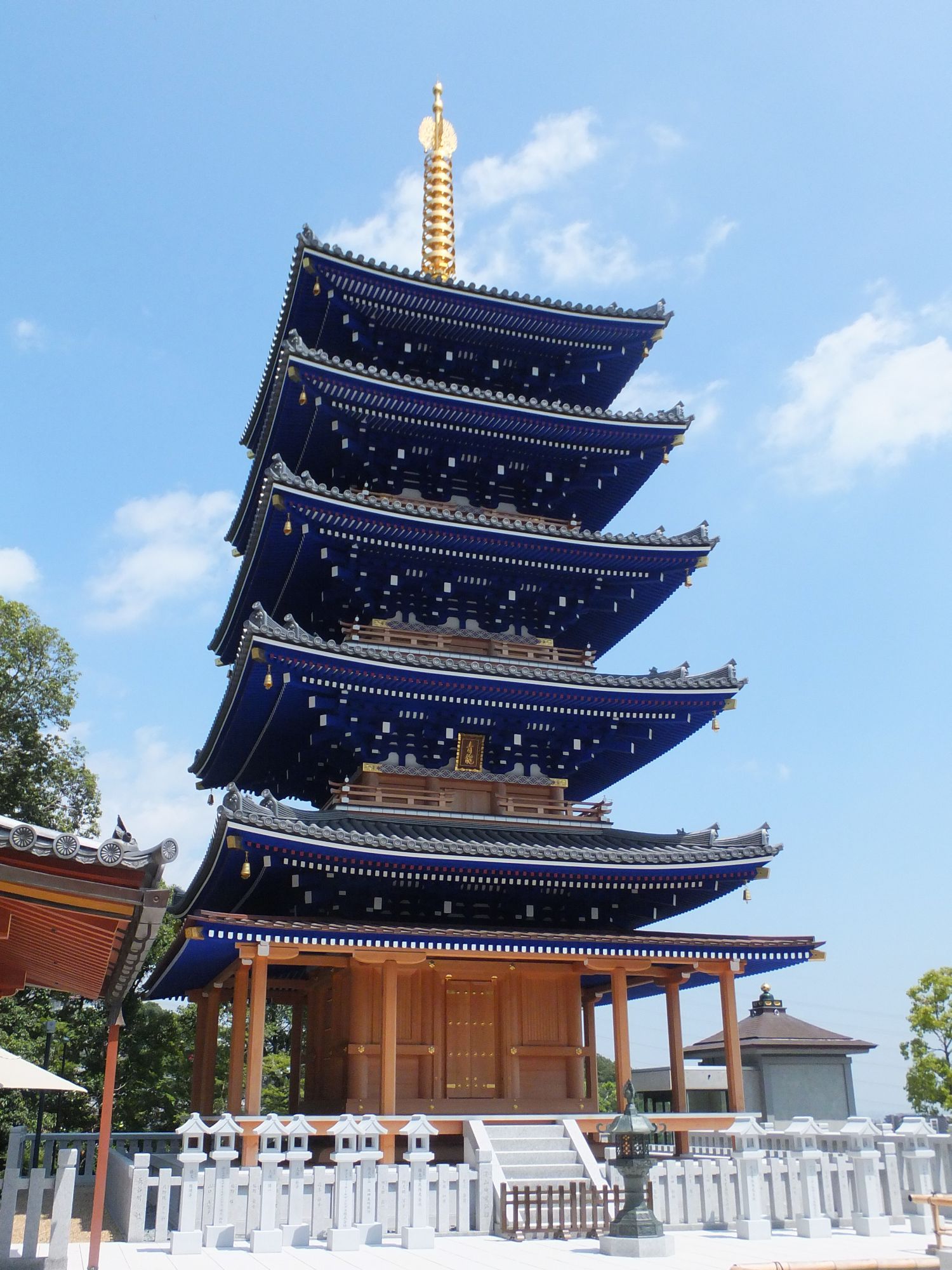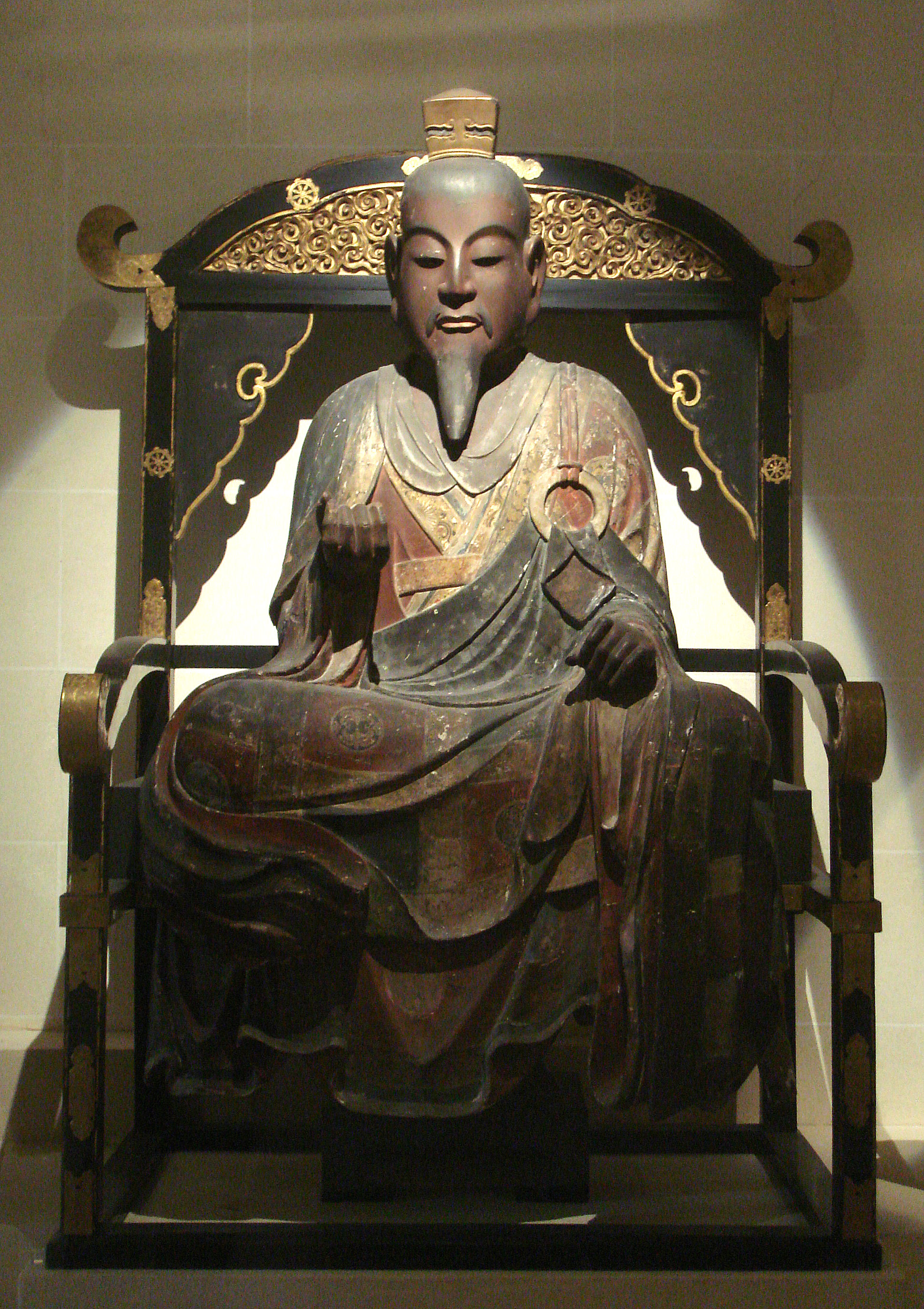|
Nakayamadera
Nakayama-dera (中山寺 ''Nakayama-dera'') is a Buddhist temple in Takarazuka, Hyōgo, Japan established in the 6th century. It is the 24th temple in the Saigoku Kannon Pilgrimage. It is one of the most popular temples in the region. History The ''engi'', or the official history of the temple, recorded that the temple was founded by Prince Shotoku, in the 6th century. Present-day buildings of this temple were mainly built by Toyotomi Hideyori in the 17th century. Hideyori was a son of Toyotomi Hideyoshi who unified Japan in the 16th century. Objects of worship The principal object of worship (''shintai'') at the temple is a Jūichimen Kannon, or the Goddess of Mercy with eleven heads. It is believed the Kannon has the power to give babies and an easy delivery. Access The railway stations near the entrance of the temple are Nakayama-kannon Station on the Hankyu Railway Takarazuka Line and Nakayamadera Station on the JR West Fukuchiyama Line (JR Takarazuka Line). See a ... [...More Info...] [...Related Items...] OR: [Wikipedia] [Google] [Baidu] |
Nakayamadera Station
is a passenger railway station located in the city of Takarazuka, Hyōgo Prefecture, Japan. It is operated by the West Japan Railway Company (JR West). Lines Nakayamadera Station is served by the Fukuchiyama Line (JR Takarazuka Line), and is located 14.5 kilometers from the terminus of the line at and 22.2 kilometers from . Station layout The station consists of two ground-level opposed side platforms connected to the station building by a footbridge. The station has a ''Midori no Madoguchi'' staffed ticket office. Platforms Adjacent stations History Nakayamadera Station opened on 27 December 1897, as a station of Hankaku Railway, which was nationalized in 1907. It was renamed to its present name on 11 September 1915. With the privatization of the Japan National Railways (JNR) on 1 April 1987, the station came under the aegis of the West Japan Railway Company. Station numbering was introduced in March 2018 with Nakayamadera being assigned station number JR-G5 ... [...More Info...] [...Related Items...] OR: [Wikipedia] [Google] [Baidu] |
Nakayama-dera Main Hall 201608
Nakayama-dera (中山寺 ''Nakayama-dera'') is a Buddhist temple in Takarazuka, Hyōgo, Japan established in the 6th century. It is the 24th temple in the Saigoku Kannon Pilgrimage. It is one of the most popular temples in the region. History The ''engi'', or the official history of the temple, recorded that the temple was founded by Prince Shotoku, in the 6th century. Present-day buildings of this temple were mainly built by Toyotomi Hideyori in the 17th century. Hideyori was a son of Toyotomi Hideyoshi who unified Japan in the 16th century. Objects of worship The principal object of worship (''shintai'') at the temple is a Jūichimen Kannon, or the Goddess of Mercy with eleven heads. It is believed the Kannon has the power to give babies and an easy delivery. Access The railway stations near the entrance of the temple are Nakayama-kannon Station on the Hankyu Railway Takarazuka Line and Nakayamadera Station on the JR West Fukuchiyama Line (JR Takarazuka Line). See a ... [...More Info...] [...Related Items...] OR: [Wikipedia] [Google] [Baidu] |
Nakayama-dera Five-storied Pagoda 201708
Nakayama-dera (中山寺 ''Nakayama-dera'') is a Buddhist temple in Takarazuka, Hyōgo, Japan established in the 6th century. It is the 24th temple in the Saigoku Kannon Pilgrimage. It is one of the most popular temples in the region. History The ''engi'', or the official history of the temple, recorded that the temple was founded by Prince Shotoku, in the 6th century. Present-day buildings of this temple were mainly built by Toyotomi Hideyori in the 17th century. Hideyori was a son of Toyotomi Hideyoshi who unified Japan in the 16th century. Objects of worship The principal object of worship (''shintai'') at the temple is a Jūichimen Kannon, or the Goddess of Mercy with eleven heads. It is believed the Kannon has the power to give babies and an easy delivery. Access The railway stations near the entrance of the temple are Nakayama-kannon Station on the Hankyu Railway Takarazuka Line and Nakayamadera Station on the JR West Fukuchiyama Line (JR Takarazuka Line). See a ... [...More Info...] [...Related Items...] OR: [Wikipedia] [Google] [Baidu] |
Nakayamadera Daimon02s2048
Nakayama-dera (中山寺 ''Nakayama-dera'') is a Buddhist temple in Takarazuka, Hyōgo, Japan established in the 6th century. It is the 24th temple in the Saigoku Kannon Pilgrimage. It is one of the most popular temples in the region. History The ''engi'', or the official history of the temple, recorded that the temple was founded by Prince Shotoku, in the 6th century. Present-day buildings of this temple were mainly built by Toyotomi Hideyori in the 17th century. Hideyori was a son of Toyotomi Hideyoshi who unified Japan in the 16th century. Objects of worship The principal object of worship (''shintai'') at the temple is a Jūichimen Kannon, or the Goddess of Mercy with eleven heads. It is believed the Kannon has the power to give babies and an easy delivery. Access The railway stations near the entrance of the temple are Nakayama-kannon Station on the Hankyu Railway Takarazuka Line and Nakayamadera Station on the JR West Fukuchiyama Line (JR Takarazuka Line). See a ... [...More Info...] [...Related Items...] OR: [Wikipedia] [Google] [Baidu] |
Nakayama-kannon Station
is a passenger railway station located in the city of Takarazuka Hyōgo Prefecture, Japan. It is operated by the private transportation company Hankyu Railway. Lines Nakayama-kannon Station is served by the Hankyu Takarazuka Line, and is located 21.5 kilometers from the terminus of the line at . Station layout The station two elevated side platforms, with the station building underneath. Platforms Adjacent stations History Nakayama-kannon Station opened on March 10, 1910 as , It was renamed on December 21, 2013. Passenger statistics In fiscal 2019, the station was used by an average of 11,994 passengers daily Surrounding area *Nakayama-dera *Nakayamadera Station (JR West) See also *List of railway stations in Japan The links below contain all of the 8579 railway stations in Japan. External links {{Portal bar, Japan, Trains * Railway stations Japan Japan ( ja, 日本, or , and formally , ''Nihonkoku'') is an island country in East Asia. I ... [...More Info...] [...Related Items...] OR: [Wikipedia] [Google] [Baidu] |
Takarazuka, Hyōgo
270px, Takarazuka City Hall 270px, Aerial view of Takarazuka city center The kanji (UTF-8 code FA1016), which is part of Takarazuka's official name (), is not available on all systems. (It can be entered in Wikipedia with HTML character 塚.) When not available, the kanji (UTF-8 code 585A16, HTML character 塚) is used as a substitute, rendering Takarazuka as . () is a city located in Hyōgo Prefecture, Japan. , the city had an estimated population of 224,054 in 96463 households and a population density of 2200 persons per km². The total area of the city is . Known as the "inner parlor" of Kansai, Takarazuka is famous for the Takarazuka Revue, hot springs, and the Takarazuka Tourism Fireworks Display held since 1913. It is also famous as a choice residential area along with Ashiya and Nishinomiya. Geography Takarazuka is located in the northern part of the Hanshin area, surrounded by the Rokko Range to the west and the Nagao mountain range to the nor ... [...More Info...] [...Related Items...] OR: [Wikipedia] [Google] [Baidu] |
Fukuchiyama Line
The is a railway line operated by West Japan Railway Company (JR West) connecting Osaka and Fukuchiyama, Kyoto, Fukuchiyama, Japan. Within JR West's "Urban Network" covering the Osaka–Kobe–Kyoto metropolitan region, the line from Osaka to Sasayamaguchi is also called the JR Takarazuka Line (). The line traverses the cities of Kawanishi, Hyogo, Kawanishi and Takarazuka, Hyogo, Takarazuka in the northwestern corner of the Osaka metropolitan area. Although Amagasaki Station (JR West), Amagasaki is the line's official southeastern terminus, all trains continue east to Osaka Station, Osaka and beyond on the JR Kōbe Line, or to the Gakkentoshi Line via the JR Tōzai Line. Basic data *Operators, distances: 106.5 km / 66.2 mi. **West Japan Railway Company (Rail transport in Japan#Category-1, Category-1, Services and tracks) *Track: **Double-track line: ***From Amagasaki to Sasayamaguchi **Single-track line: ***From Sasayamaguchi to Fukuchiyama *Railway signalling: Autom ... [...More Info...] [...Related Items...] OR: [Wikipedia] [Google] [Baidu] |
Saigoku Kannon Pilgrimage
The is a pilgrimage of thirty-three Buddhist temples throughout the Kansai region of Japan, similar to the Shikoku Pilgrimage. In addition to the official thirty-three temples, there are an additional three known as . The principal image in each temple is Kannon, known to Westerners as the Bodhisattva of Compassion (or sometimes mistranslated as 'Goddess of Mercy') ; however, there is some variation among the images and the powers they possess. It is traditional for pilgrims to wear white clothing and conical straw hats and to carry walking sticks. While the route was historically traveled by foot, today pilgrims usually use cars or trains. Pilgrims record their progress with a , which the temple staff mark with red stamps and Japanese calligraphy indicating the temple number, the temple name, and the specific name of the Kannon image. Some pilgrims receive the stamps and calligraphy on wall scrolls (for a decorative hanging) and on their white coats (to be cremated in) as well. ... [...More Info...] [...Related Items...] OR: [Wikipedia] [Google] [Baidu] |
Buddhist Temples In Hyōgo Prefecture
Buddhism ( , ), also known as Buddha Dharma and Dharmavinaya (), is an Indian religion or philosophical tradition based on teachings attributed to the Buddha. It originated in northern India as a -movement in the 5th century BCE, and gradually spread throughout much of Asia via the Silk Road. It is the world's fourth-largest religion, with over 520 million followers (Buddhists) who comprise seven percent of the global population. The Buddha taught the Middle Way, a path of spiritual development that avoids both extreme asceticism and hedonism. It aims at liberation from clinging and craving to things which are impermanent (), incapable of satisfying ('), and without a lasting essence (), ending the cycle of death and rebirth (). A summary of this path is expressed in the Noble Eightfold Path, a training of the mind with observance of Buddhist ethics and meditation. Other widely observed practices include: monasticism; "taking refuge" in the Buddha, the , and the ; and ... [...More Info...] [...Related Items...] OR: [Wikipedia] [Google] [Baidu] |
Historical Sites Of Prince Shōtoku
The Historical Sites of Prince Shōtoku (聖徳太子御遺跡霊場, ''Shōtoku taishi goiseki reijō'') are a group of 28 Buddhist temples in Japan related to the life of Prince Shōtoku , also known as or , was a semi-legendary regent and a politician of the Asuka period in Japan who served under Empress Suiko. He was the son of Emperor Yōmei and his consort, Princess Anahobe no Hashihito, who was also Yōmei's younger half- .... Directory {{DEFAULTSORT:Historical Sites of Prince Shotoku Buddhist temples in Nara Prefecture Buddhist temples in Osaka Prefecture Buddhist temples in Kyoto Prefecture Buddhist temples in Hyōgo Prefecture Buddhist pilgrimage sites in Japan Religious buildings and structures in Kyoto Prefecture Prince Shōtoku Buddhism in the Asuka period ... [...More Info...] [...Related Items...] OR: [Wikipedia] [Google] [Baidu] |
JR West
, also referred to as , is one of the Japan Railways Group (JR Group) companies and operates in western Honshu. It has its headquarters in Kita-ku, Osaka. It is listed in the Tokyo Stock Exchange, is a constituent of the TOPIX Large70 index, and is also one of only three Japan Railways Group constituents of the Nikkei 225 index: the others are JR East and JR Central. It was also listed in the Nagoya and Fukuoka stock exchanges until late 2020. Lines Shinkansen * Hokuriku Shinkansen ( - ) * San'yō Shinkansen * Hakata Minami Line :: Officially not a Shinkansen JR-West's highest-grossing line is the Sanyo Shinkansen high-speed rail line between Osaka and Fukuoka. The Sanyo Shinkansen alone accounts for about 40% of JR-West's passenger revenues. The company also operates Hakata Minami Line, a short commuter line with Shinkansen trains in Fukuoka. Urban Network The "Urban Network" is JR-West's name for its commuter rail lines in the Osaka-Kobe-Kyoto metropolitan area. These lines t ... [...More Info...] [...Related Items...] OR: [Wikipedia] [Google] [Baidu] |
Hankyu Takarazuka Line
The is a Japanese railway line operated by the private railway operator Hankyu Railway. It connects Umeda Station in downtown Osaka with Takarazuka Station in Takarazuka, Hyogo. It has a branch line, the Minoo Line, and the Nose Electric Railway is another longer branch line. The Imazu Line connects at Takarazuka, but it is treated as a branch of the Kobe Line. The Takarazuka Main Line is commonly called the for short, but the name Takarazuka Line is sometimes used as the name for the network composed of the main line and the branches. The line has numerous sharp curves from the line's origins as a tramway, built and opened by its predecessor . The sharp curves have long hindered high speed operation, contrasting to the Hankyu's other main lines, Kobe and Kyoto. History The Minoo Arima Electric Tramway opened the entire line on 10 March 1910 as 1435mm gauge dual track, electrified at 600 VDC. Although the line was not a prospect interurban as Takarazuka was not a big city, ... [...More Info...] [...Related Items...] OR: [Wikipedia] [Google] [Baidu] |




